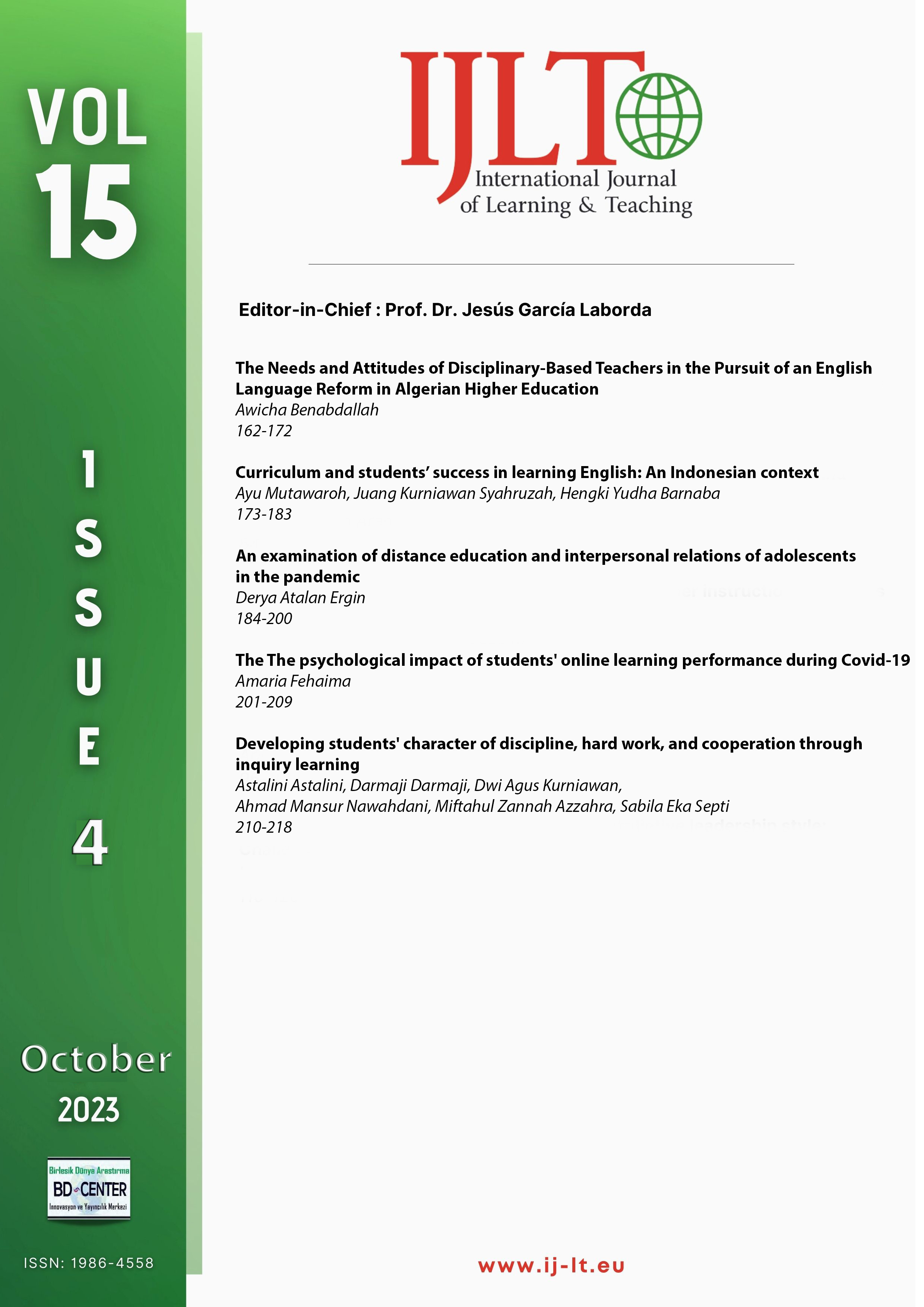Curriculum and students’ success in learning English: An Indonesian context
Main Article Content
Abstract
This article aims to determine the students’ achievement of the English language while implementing the K-13 curriculum. This research used a descriptive qualitative method. The researcher used a purposive sampling technique. To collect the data, the researchers used time triangulation, by observation and interviewing English teachers at different times, that is, in the morning and during the day. Documentation was used as supporting data to get more information about students’ achievement of English in implementing k13. The affective and psychomotor domains in the checklist table regarding student achievement that the researcher gave to the teacher showed that on average, students were quite good in the affective domain. On the other hand, the psychomotor domain was not very good. The researchers concluded that the student achievement of English in implementing K13 was not successful.
Keywords: Achievement ; affective domain ; English language ; implementing K13; psychomotor domain ; student achievement
Downloads
Article Details

This work is licensed under a Creative Commons Attribution-NonCommercial-NoDerivatives 4.0 International License.
Authors who publish with this journal agree to the following terms:
- Authors retain copyright and grant the journal right of first publication with the work simultaneously licensed under a Creative Commons Attribution License that allows others to share the work with an acknowledgement of the work's authorship and initial publication in this journal.
- Authors are able to enter into separate, additional contractual arrangements for the non-exclusive distribution of the journal's published version of the work (e.g., post it to an institutional repository or publish it in a book), with an acknowledgement of its initial publication in this journal.
- Authors are permitted and encouraged to post their work online (e.g., in institutional repositories or on their website) prior to and during the submission process, as it can lead to productive exchanges, as well as earlier and greater citation of published work (SeeThe Effect of Open Access).
